20 LED Lighting Ideas for Modern and Efficient Home Design
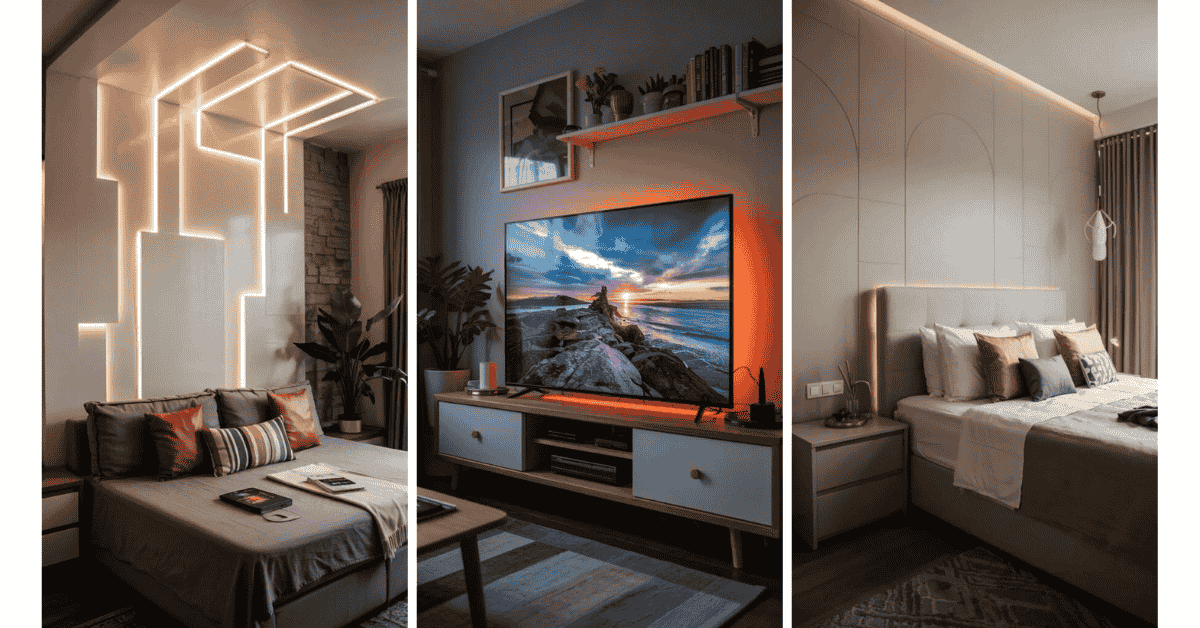
LED lighting has become a popular choice for modern homes due to its energy efficiency and versatility. It offers numerous options for creating different atmospheres and enhancing the aesthetic appeal of various spaces.
The key benefit of LED lighting is its ability to combine style with functionality, allowing people to improve both the look and feel of their living areas while saving energy.
This article presents 20 practical ideas to inspire the effective use of LED lighting throughout the home.
1) Under-cabinet kitchen LED lighting
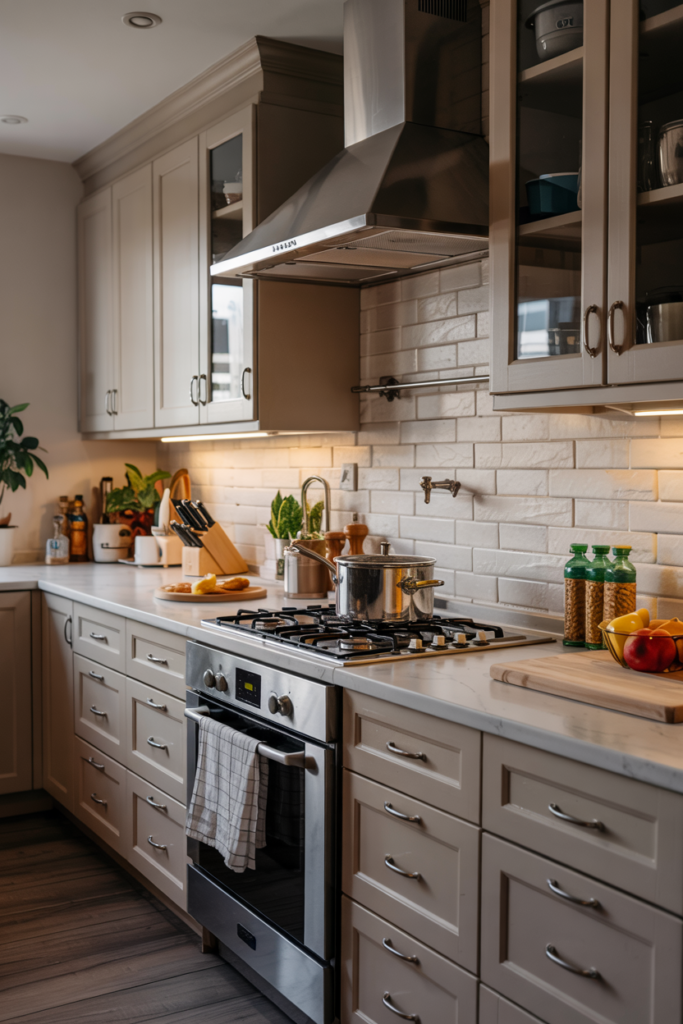
Under-cabinet LED lighting offers practical illumination for kitchen countertops. It reduces shadows while preparing food and improves visibility in work areas.
These lights often feature slim profiles, fitting neatly under cabinets without disrupting the design. They are energy-efficient and many come with dimmable options for adjustable brightness.
Installation is generally straightforward, making them suitable for various budgets and kitchen styles. This lighting enhances both functionality and ambiance in the kitchen space.
2) LED strip lights under floating shelves
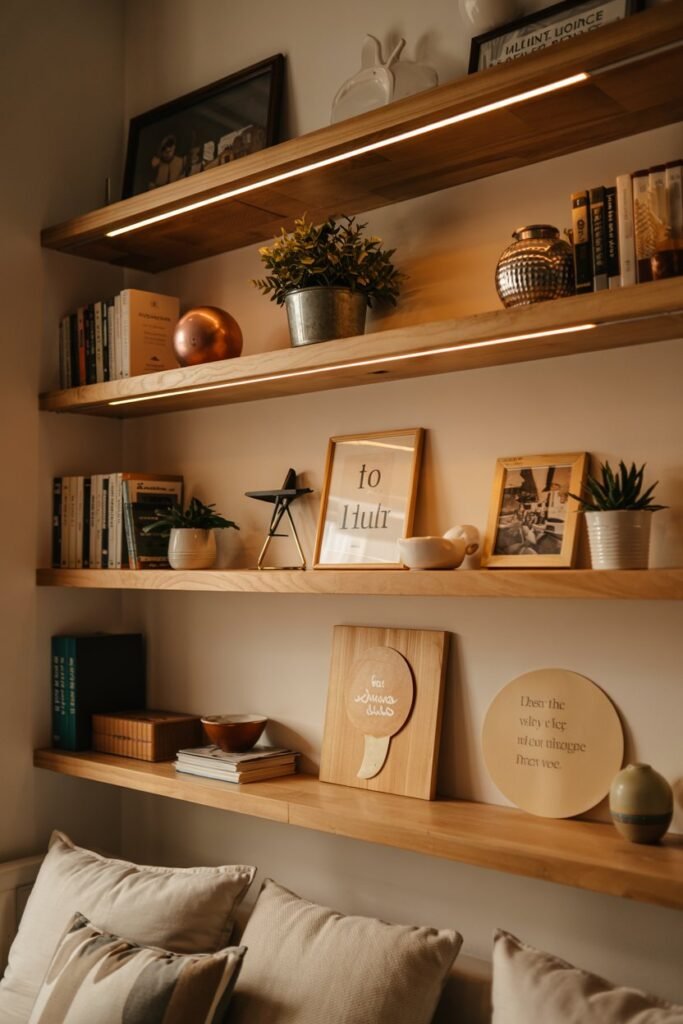
LED strip lights installed under floating shelves offer consistent ambient lighting that enhances the space’s aesthetics. They help highlight objects on the shelves without overpowering the room.
The strips are easy to install and can be hidden behind the shelf edge for a clean, professional look. Warm-toned LEDs work well to create a cozy atmosphere, especially in living or dining areas.
This lighting solution combines function and style, making shelves stand out while providing useful illumination for the area below.
3) LED accent walls
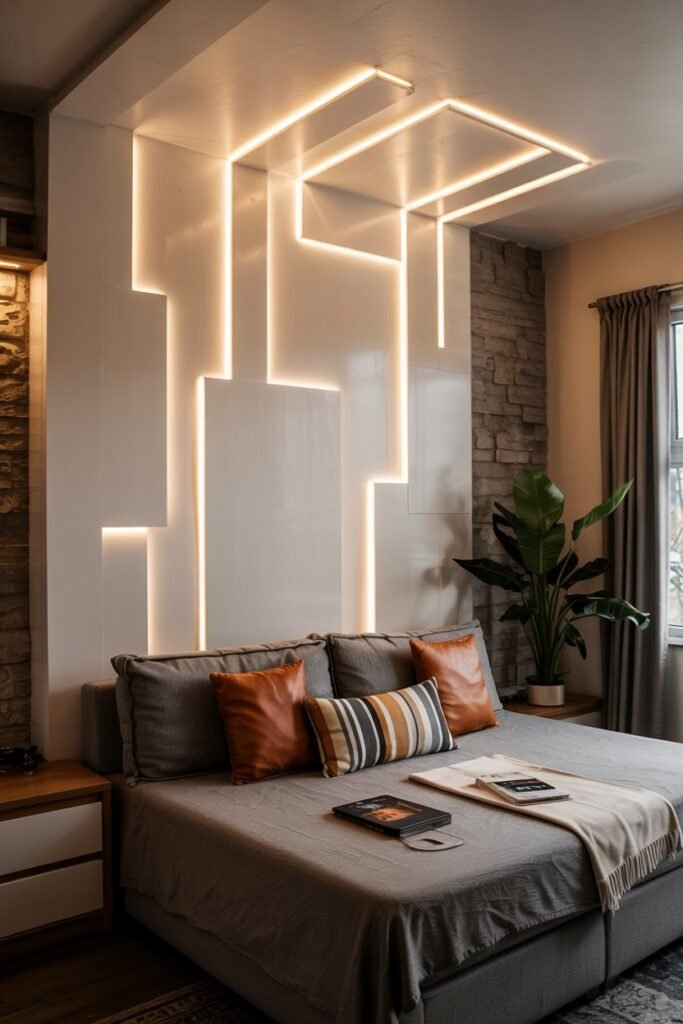
LED accent walls create a modern focal point in any room. They use LED strips or panels to highlight textures and architectural features.
Color-changing LED lights offer customizable options for mood and style. This flexibility allows for daily changes without extra decor.
Adding LED lights to a wall can enhance depth and interest. It invites attention without overwhelming the overall design.
4) Cove lighting with concealed LED strips
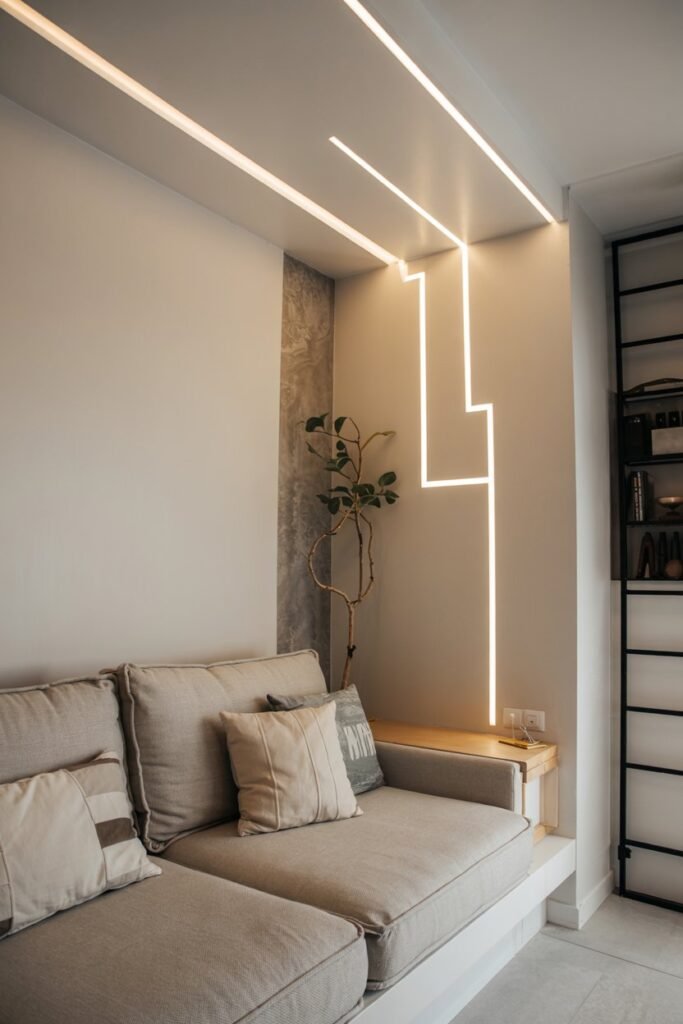
Cove lighting uses recessed channels in ceilings or walls to hide LED strips. This placement prevents direct glare and produces a soft, indirect glow that enhances room contours.
LED strips in coves reflect light off adjacent surfaces, creating a natural, even illumination. This technique adds depth and warmth without overpowering the space.
It is an energy-efficient option ideal for living rooms, bedrooms, and bathrooms. Proper installation ensures the light source remains hidden while maximizing aesthetic appeal.
5) LED lighting in ceiling soffits
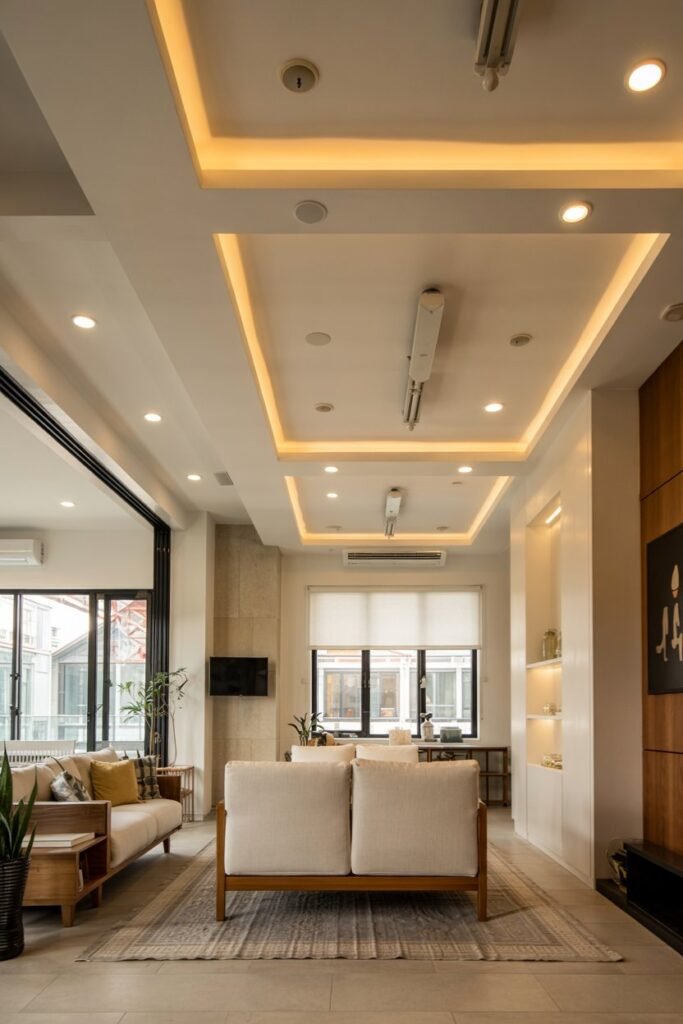
LED lighting in ceiling soffits offers subtle, indirect illumination that enhances a room’s ambiance without overpowering it. It is often installed in recessed channels to create a clean, modern look.
This lighting improves visual comfort by reducing harsh shadows and evenly brightening the space. It also adds architectural interest by highlighting ceiling details.
6) Backlighting for TVs with LED strips
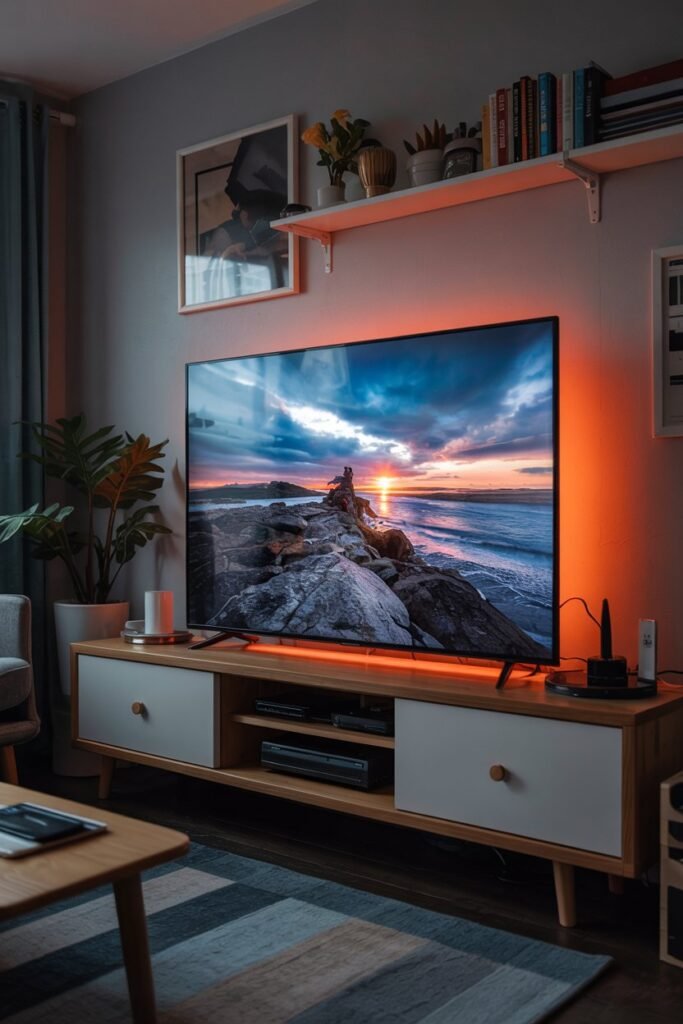
Backlighting a TV with LED strips reduces eye strain by providing gentle ambient light behind the screen. It enhances the viewing experience without distracting from the content.
LED strips can be easily installed on the back edges of TVs. Many models offer smart controls, allowing users to adjust colors and brightness with a phone or remote.
Some LED strips feature multi-zone lighting that syncs with on-screen content, adding immersion during movies and games. This setup suits various TV sizes and styles.
7) LED stair tread lighting
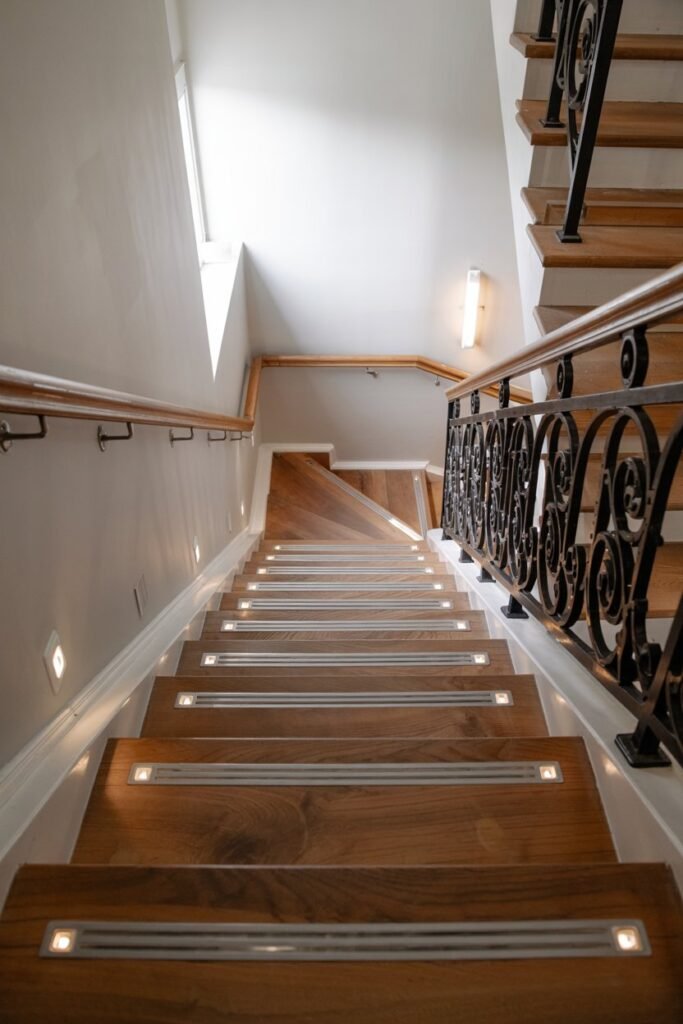
LED stair tread lighting involves installing lights directly into the horizontal surface of each step. This method provides clear visibility of each tread, improving safety in low-light conditions.
It creates a modern and subtle look without overwhelming the staircase design. The lighting is often energy-efficient and can be integrated with different color options to suit various styles.
8) LED headboard lighting
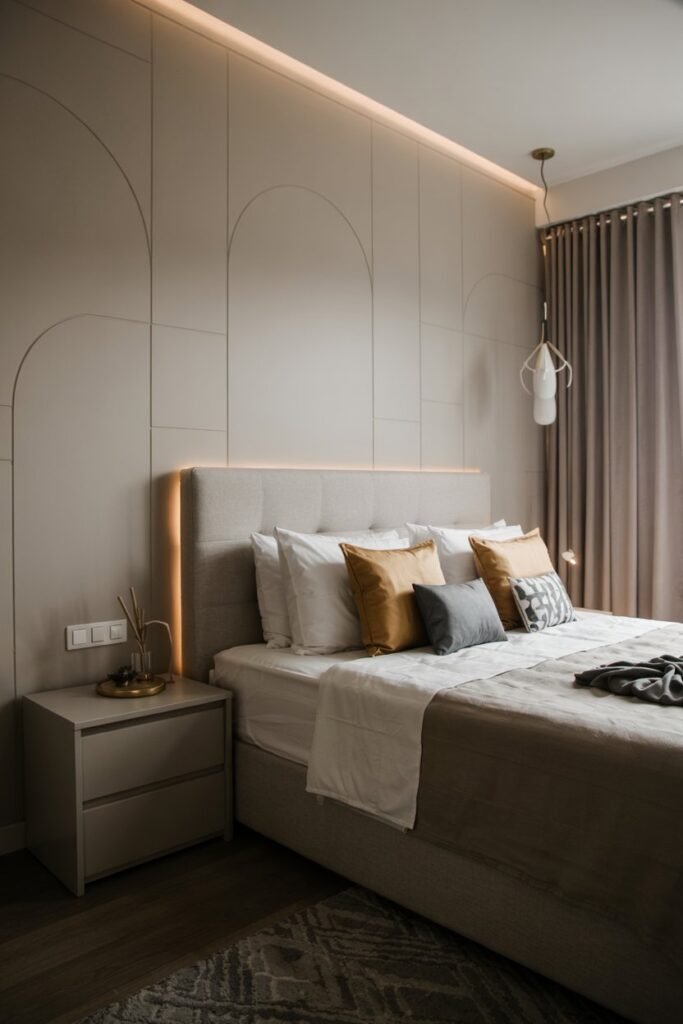
LED lighting integrated into headboards adds both style and function to bedrooms. It creates a soft, customizable glow that can enhance relaxation or provide subtle task lighting.
Installation is typically straightforward, with options ranging from strip lights to app-controlled bands. These lights offer flexibility in color and brightness, allowing users to adjust ambiance according to their preferences.
LED headboard lighting can be DIY or purchased as part of a customized unit. It enhances comfort while contributing to a modern and elegant bedroom design.
9) Color-changing smart LED bulbs
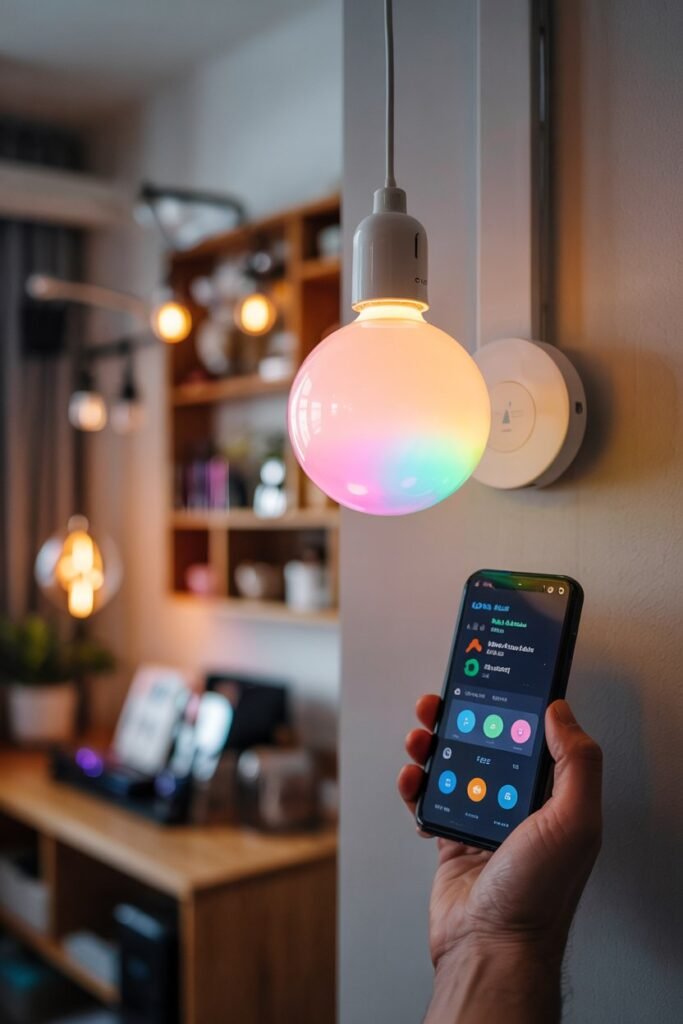
Color-changing smart LED bulbs offer versatile lighting options through millions of colors and adjustable brightness. They connect easily to smart home systems, allowing users to control settings via apps or voice commands.
These bulbs enhance ambiance and functionality in any room. Users can create custom scenes, schedule lighting changes, and improve energy efficiency with these smart devices.
10) LED rope lights for outdoor patios
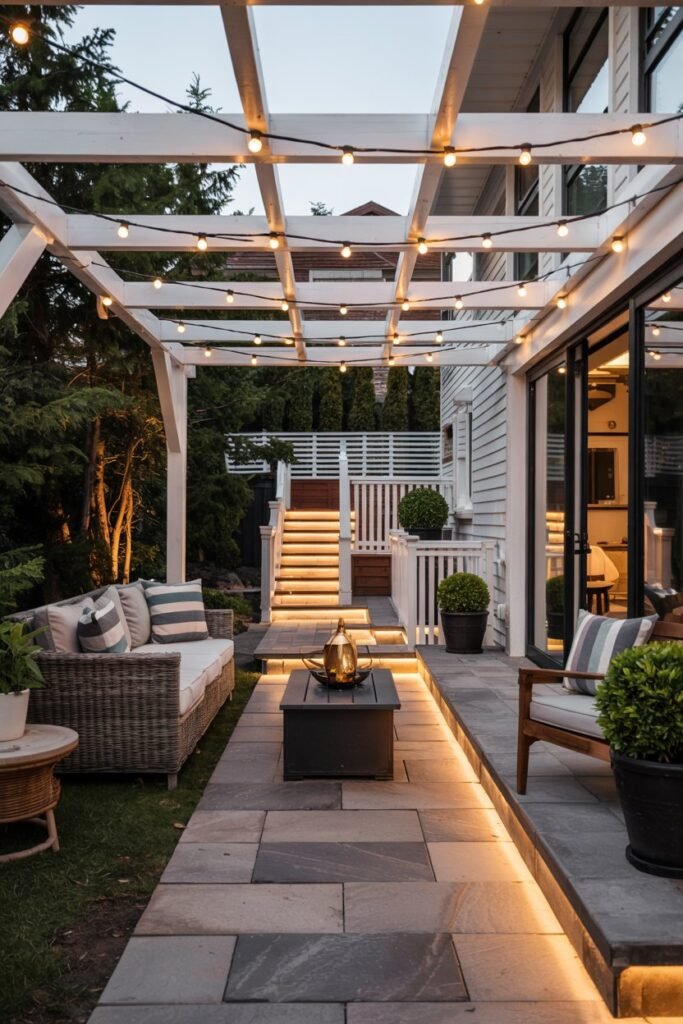
LED rope lights provide subtle, even illumination that enhances outdoor patios without overpowering the space. They are flexible and easy to install along railings, under decks, or around seating areas.
These lights are weather-resistant, making them suitable for year-round use. Their energy efficiency and low heat output also add to their practicality for outdoor settings.
Using LED rope lights, one can create inviting ambiance and improve safety on patios by defining edges and walkways clearly.
11) LED pendant lights for kitchens
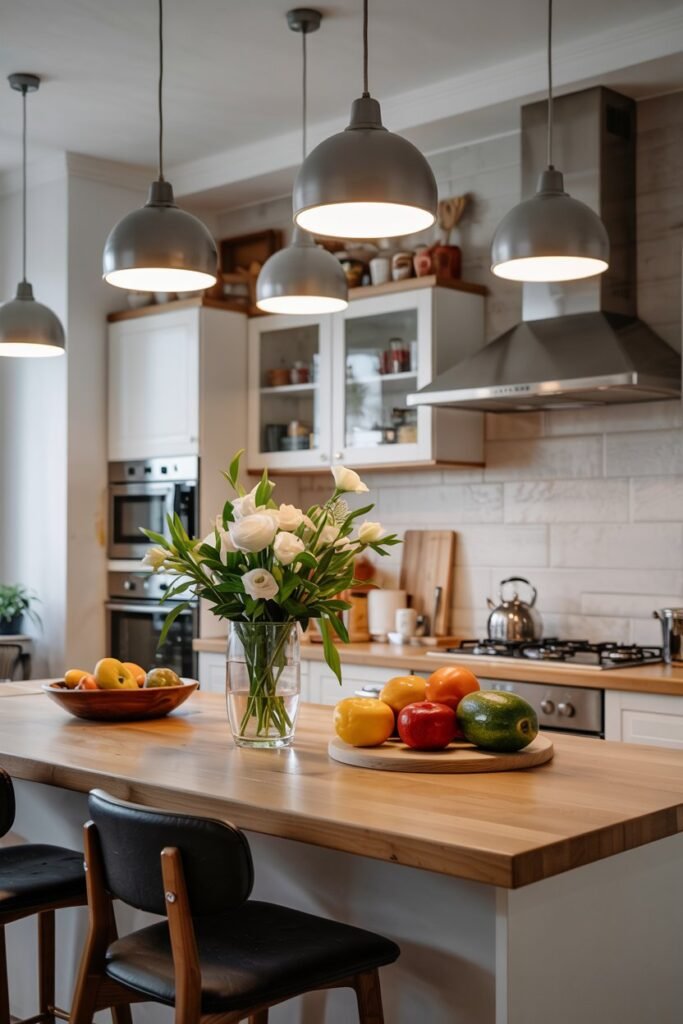
LED pendant lights offer focused illumination, ideal for kitchen islands or dining areas. They provide clear task lighting while adding a modern touch to kitchen décor.
These fixtures come in various styles, from minimalistic to decorative, suiting many design preferences. LED technology ensures energy efficiency and long-lasting performance.
Adjustable brightness features allow users to create the right ambiance for cooking or entertaining. Their compact design helps maintain an uncluttered kitchen ceiling space.
12) Recessed LED ceiling lights
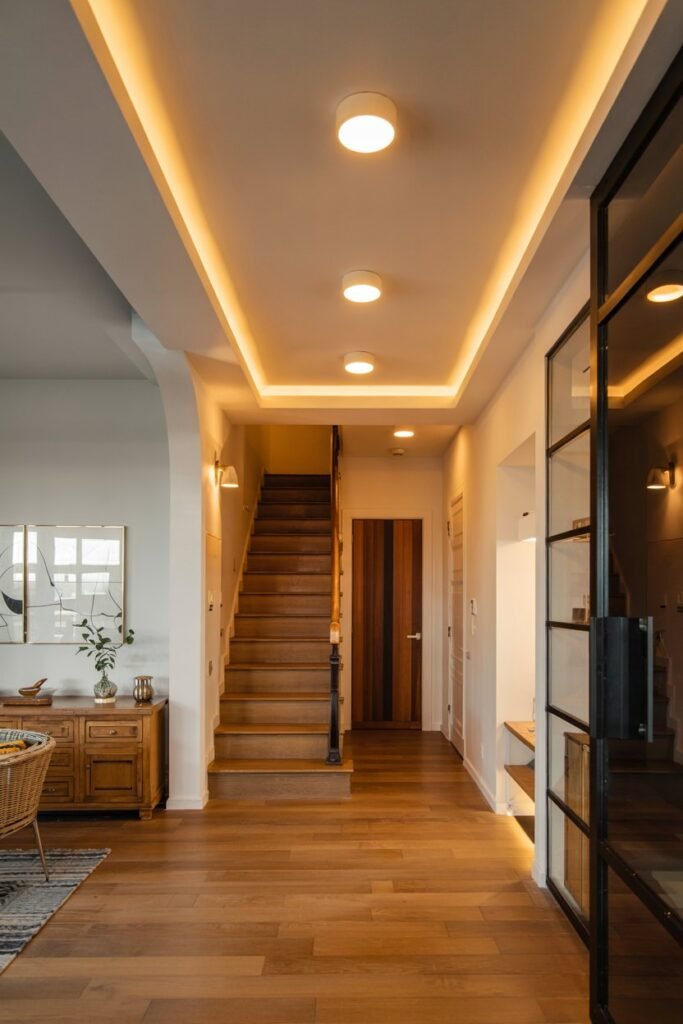
Recessed LED ceiling lights provide a sleek and modern lighting solution. They fit flush with the ceiling, offering a clean and unobtrusive look.
These lights are energy-efficient, consuming less power while providing bright and even illumination. They work well in entryways, kitchens, and living areas.
Their versatility allows for use in various ceiling types, including sloped or flat surfaces. Proper placement enhances a room’s ambiance and functionality without overwhelming the space.
13) LED floor strip lighting
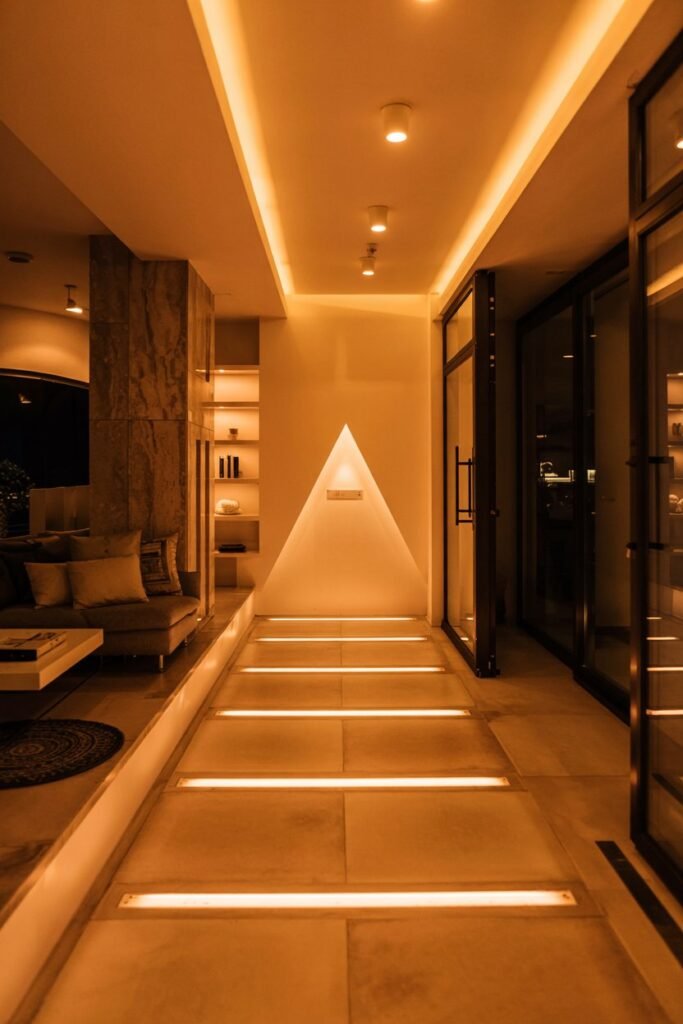
LED floor strip lighting adds subtle illumination along pathways, stairs, or room edges. It enhances safety by clearly marking walkways in low light conditions.
The strips are usually installed flush with the floor or along baseboards. They provide continuous light without obstructing the space.
This lighting option can create a modern, streamlined look. It works well in hallways, living rooms, or commercial areas requiring unobtrusive lighting.
14) LED lighting in bathroom mirrors
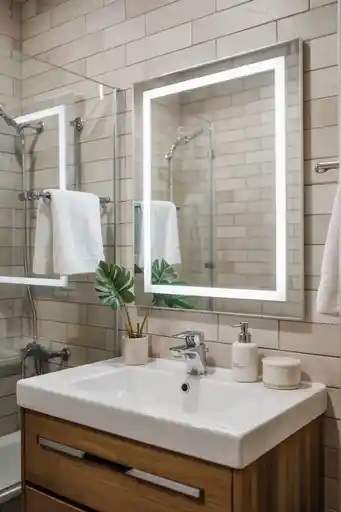
LED lighting integrated into bathroom mirrors offers both functional and aesthetic benefits. It provides consistent illumination that reduces shadows, improving tasks like shaving or applying makeup.
These mirrors often feature energy-efficient LEDs that last longer than traditional bulbs. They also add a modern touch to bathroom design without occupying extra space.
Many models allow adjustable brightness and color temperature, helping users customize lighting to their needs. This versatility makes LED mirrors a practical choice for enhancing bathroom lighting.
15) LED closet lighting
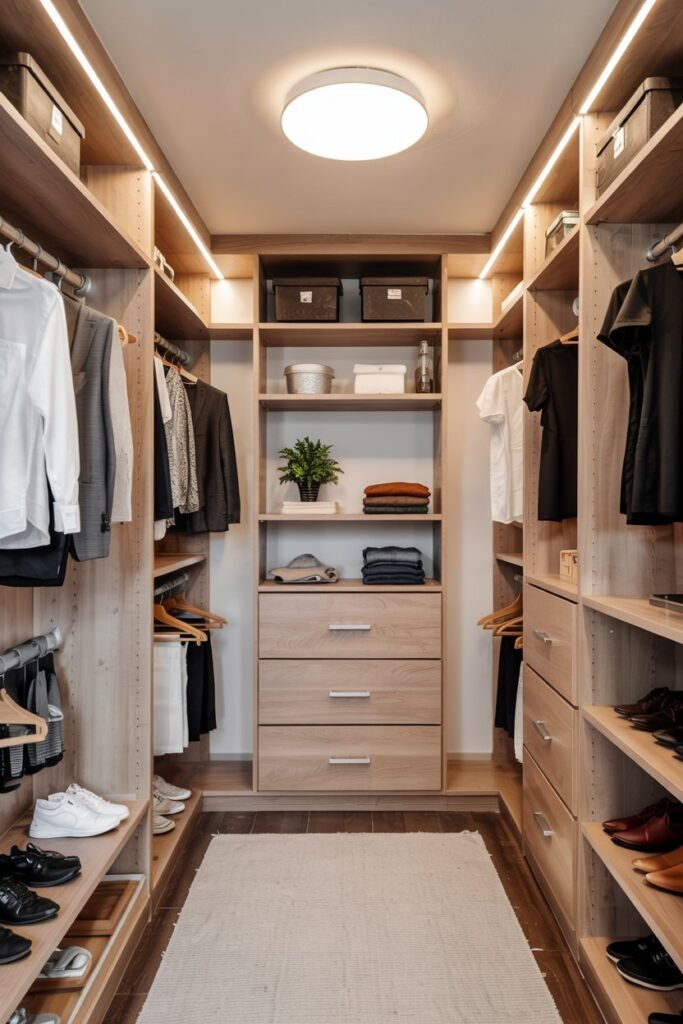
LED lighting is ideal for closets due to its energy efficiency and long lifespan. It produces minimal heat, making it safe for enclosed spaces.
Options include recessed LEDs, strip lights, and motion sensor fixtures. These provide even illumination, improving visibility and organization.
LEDs can be installed inside drawers or along shelves to highlight specific areas. This enhances functionality without increasing energy costs.
16) Highlighting artwork with LED spotlights
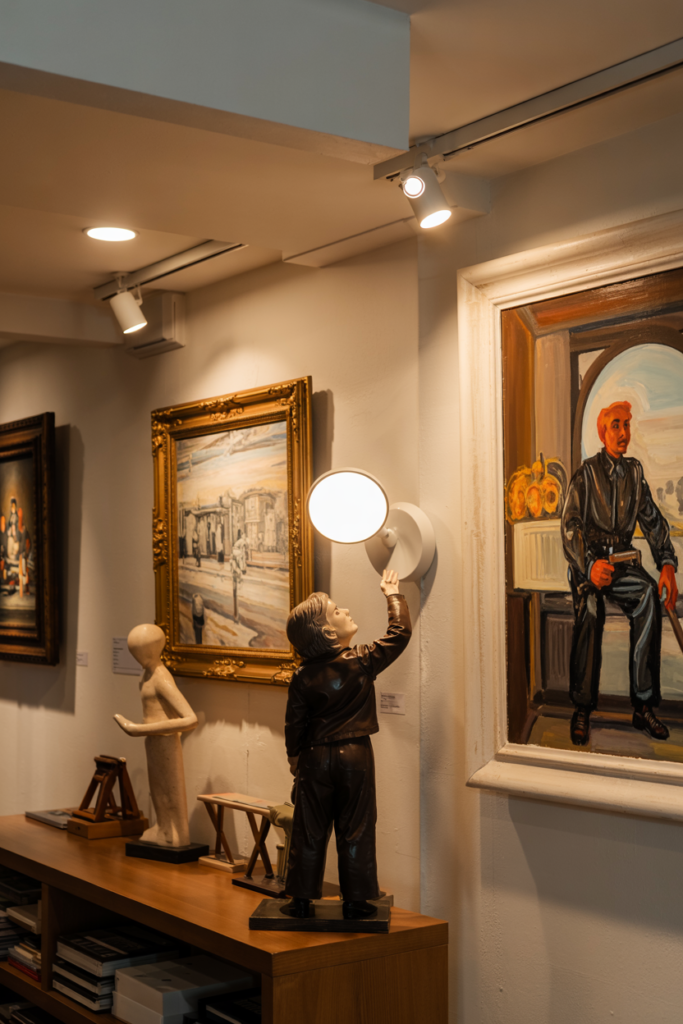
LED spotlights provide focused illumination that enhances artwork by drawing attention to details and textures. They can be wall-mounted or ceiling-installed to create a gallery-like effect.
Adjusting the angle and intensity helps avoid glare and shadows, ensuring the art is evenly lit. LED spotlights are energy-efficient, long-lasting, and produce minimal heat, protecting delicate pieces.
Selecting the right color temperature is important to complement the artwork’s tones without distorting colors. This method works well for paintings, sculptures, and photography.
17) LED lighting in bookshelves
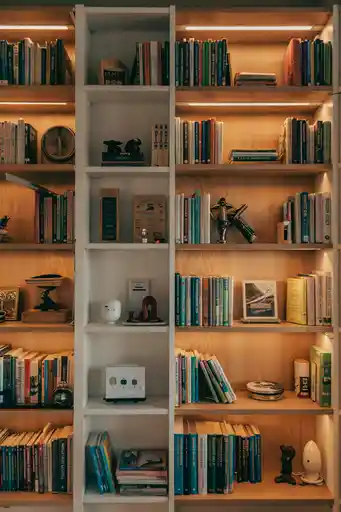
LED lighting in bookshelves offers both function and style. It highlights books and decorative items without generating heat or using much energy.
Continuous LED strips create a clean, modern look by evenly illuminating entire shelves. Spotlights can add focused accents to specific areas.
This lighting also enhances visibility, making it easier to find books in low light. Its versatility fits various bookshelf designs and interior styles.
18) LED kitchen island pendant lights
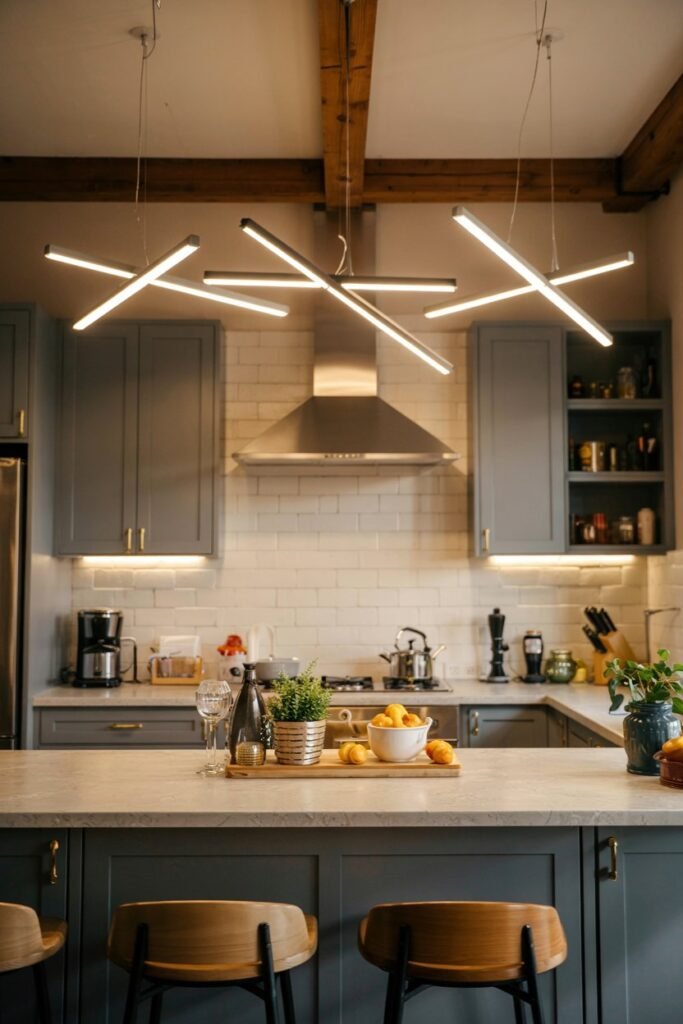
LED pendant lights provide focused illumination directly over the kitchen island, enhancing both function and style. They come in various designs, from minimalist rods to intricate clusters, fitting different kitchen aesthetics.
These lights offer energy efficiency and long lifespan, making them practical choices for daily use. The adjustable brightness allows for customized ambiance and task lighting.
LED pendants can serve as a central design element, adding visual interest without overpowering the space. They integrate well with layered lighting setups for balanced illumination.
19) Under-bed LED lighting
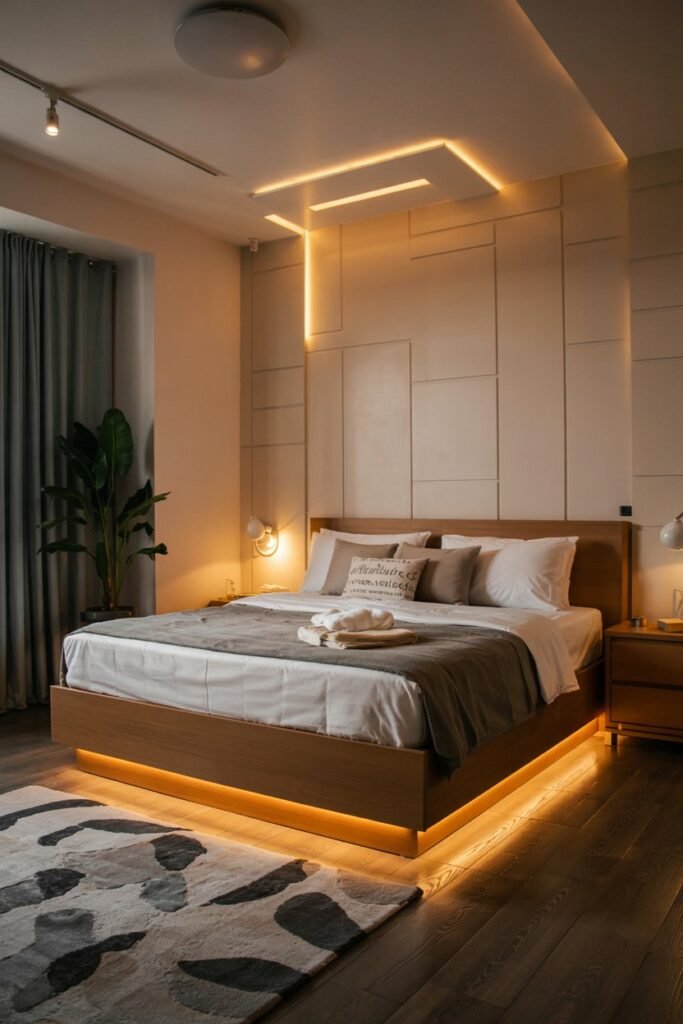
Under-bed LED lighting provides soft, indirect illumination that enhances bedroom ambiance without harsh overhead light. It offers safety by gently lighting the floor, making nighttime movement easier.
These lights are energy-efficient and often come with color options to match personal style or mood. Installation is typically simple, with strips that adhere under the bed frame. This creates a modern, subtle glow suitable for many bedroom designs.
20) LED lighting for home office desks
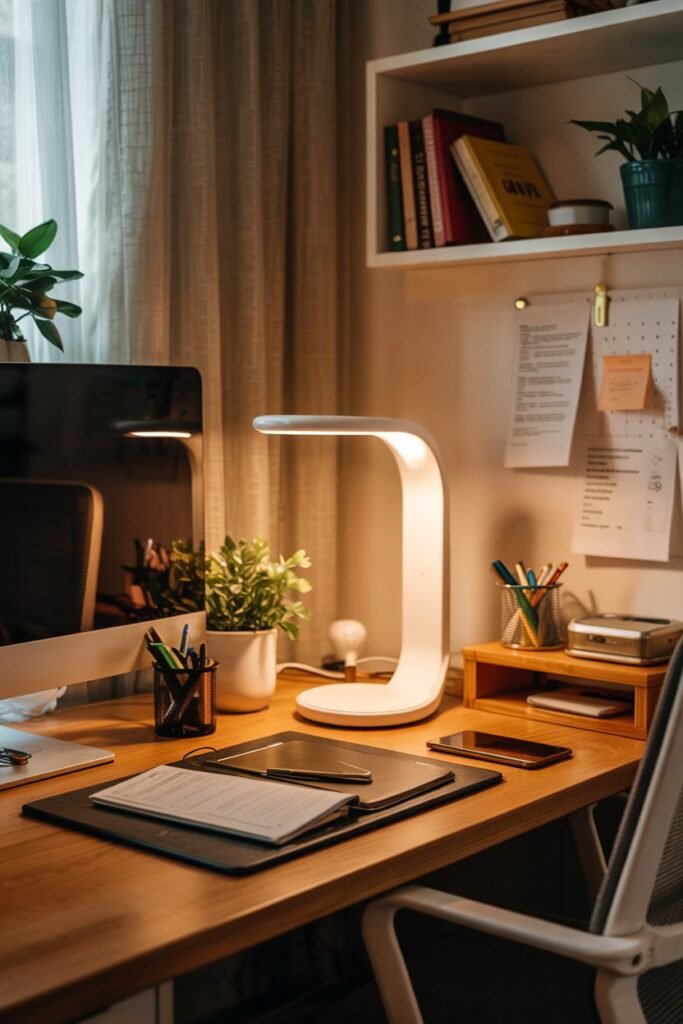
LED lighting on home office desks provides focused illumination for tasks like reading and typing. It helps reduce eye strain by offering consistent, glare-free light.
Many LED desk lamps come with adjustable brightness and color temperature, allowing users to tailor lighting to their needs. Built-in USB ports add convenience by enabling device charging.
Adding LED light strips along desk edges can create a modern, organized workspace. This also enhances visibility without overwhelming the room’s ambient light.
Benefits of LED Lighting
LED lighting offers significant advantages in cost, performance, and sustainability. It reduces energy use, lasts longer than traditional lighting, and has a smaller ecological footprint.
Energy Efficiency
LED lights consume up to 75% less energy than incandescent bulbs. This reduction in energy use lowers electricity bills and decreases demand on power plants.
They convert most electricity directly into light, unlike incandescent bulbs that waste energy as heat. This efficiency makes LEDs ideal for both residential and commercial applications.
In addition, LEDs provide consistent brightness and can be dimmed without loss of efficiency. This flexibility supports customized lighting while maintaining low energy consumption.
Longevity and Durability
LED bulbs typically last about 25 times longer than traditional incandescent bulbs. Their lifespan often exceeds 25,000 to 50,000 hours. This reduces the frequency and cost of replacements.
LEDs are also more resistant to shock, vibration, and extreme temperatures. This durability makes them suitable for various environments, including outdoor and industrial settings.
Because of their solid-state construction, LEDs do not contain fragile filaments or glass that can break easily. This increases their reliability and safety in everyday use.
Environmental Impact
LED lighting reduces carbon emissions by lowering electricity consumption. Using LEDs can significantly cut greenhouse gas output tied to energy production.
They do not contain hazardous materials like mercury, which is common in fluorescent bulbs. This makes LED disposal safer and simplifies recycling processes.
Additionally, the extended lifespan of LEDs means fewer bulbs are produced, transported, and discarded, contributing to less waste overall. Their environmental benefits support sustainable energy goals.
Key Considerations for Installing LED Lights
Proper LED installation depends on choosing the right color temperature, placing lights strategically, and ensuring dimmer compatibility. Addressing these factors enhances both functionality and ambiance efficiently.
Selecting the Right Color Temperature
Color temperature affects the mood and purpose of a space. Warm white (2700K-3000K) creates a cozy, inviting atmosphere ideal for living rooms and bedrooms. Neutral white (3500K-4100K) suits kitchens, bathrooms, and workspaces by offering balanced brightness and clarity.
Cool white or daylight (5000K-6500K) produces a crisp, energizing feel, best for garages or task areas that demand high visibility. Selecting consistent color temperature across fixtures prevents visual discomfort and maintains aesthetic harmony.
Brightness level and color rendering index (CRI) also matter. A CRI of 80 or above ensures colors appear natural under LED light.
Optimal Placement Strategies
Placement directly impacts effectiveness and energy efficiency. Under-cabinet LEDs enhance kitchen tasks by brightening countertops without glare. Recessed ceiling lights offer uniform illumination in living spaces.
For accent lighting, placing LEDs near artwork or architectural features enhances visual interest. LED strips work well in coves or along staircases for subtle guidance lighting.
Mapping the wiring and assessing ceiling or wall structures before installation prevents damage and ensures safety. Grouping lights into zones allows adjustment of lighting levels by area, improving control and saving energy.
Dimming and Compatibility
Not all LEDs dim smoothly; compatibility with existing dimmers is essential. Using dimmable LEDs paired with compatible drivers or dimmer switches ensures flicker-free operation.
LEDs require low-voltage dimmers designed explicitly for their power load and technology. Failing to match dimmers can cause buzzing or incomplete dimming.
For applications requiring control over brightness or color temperature, advanced dimmers or smart lighting systems provide better flexibility. Testing fixtures with dimmers before full installation avoids costly issues later.
